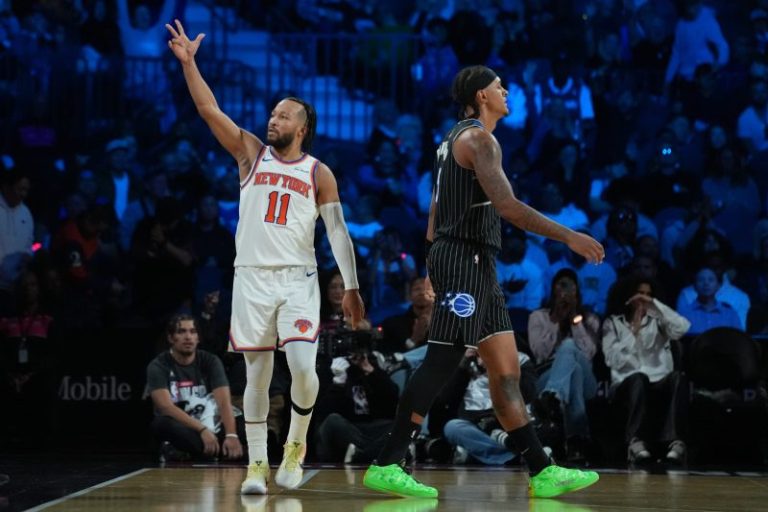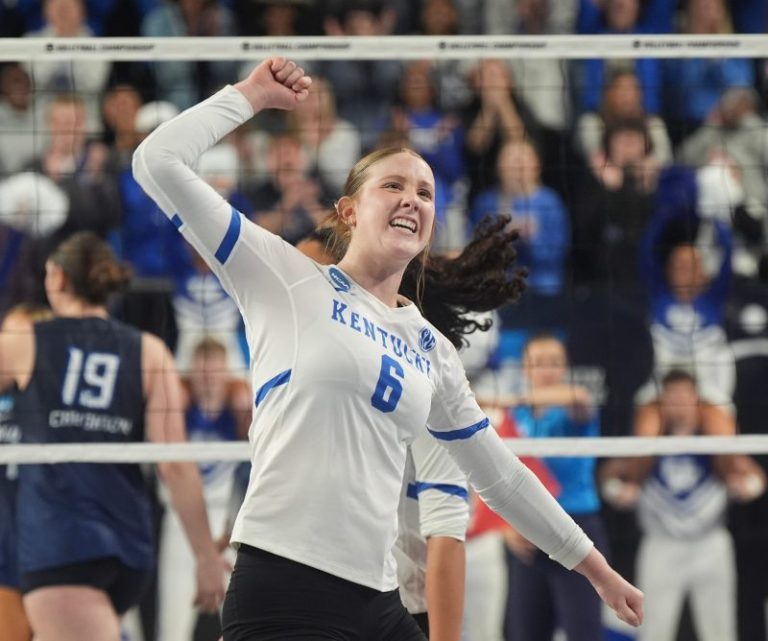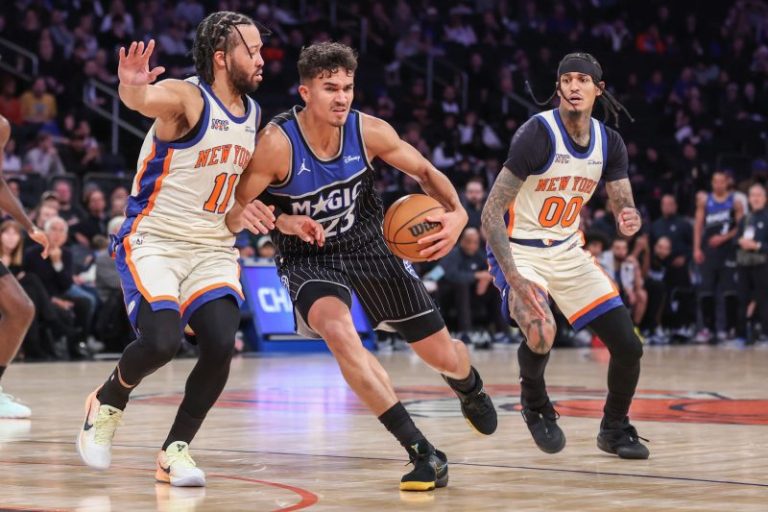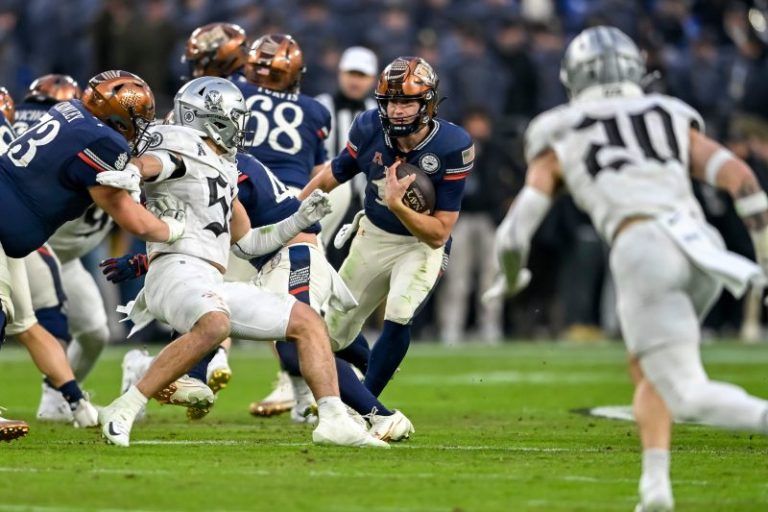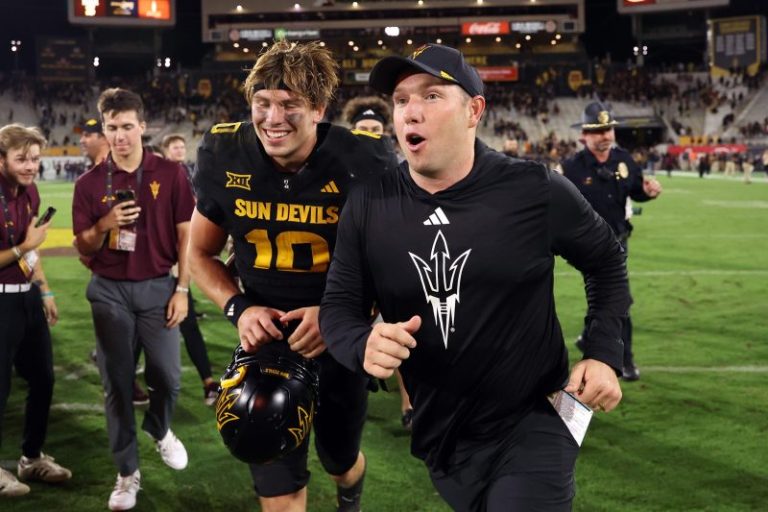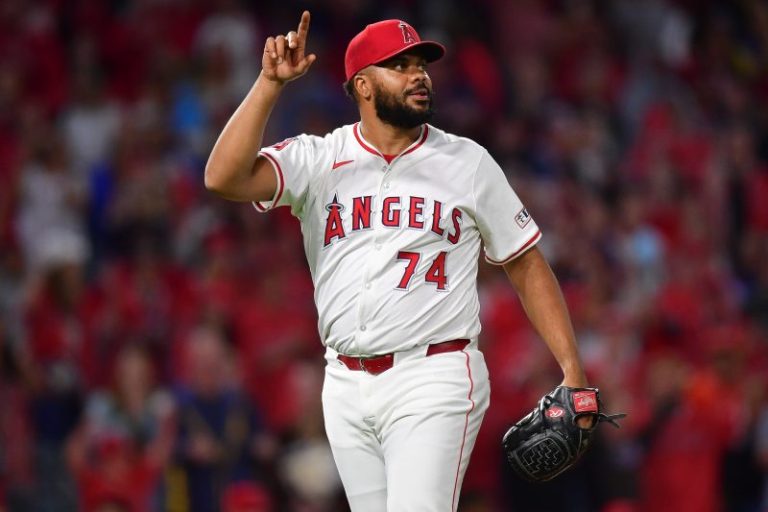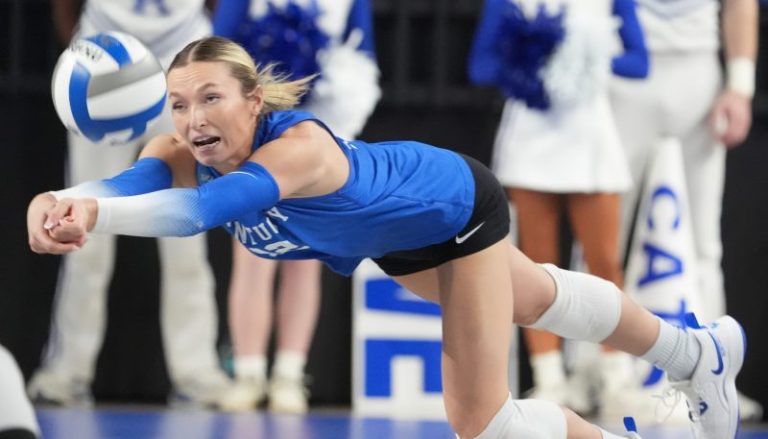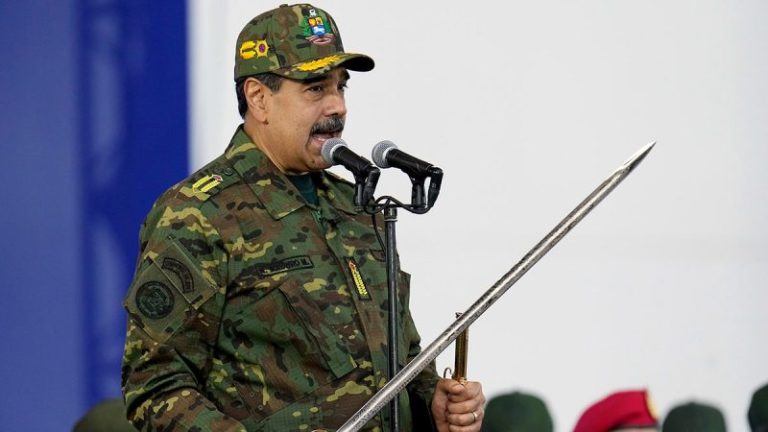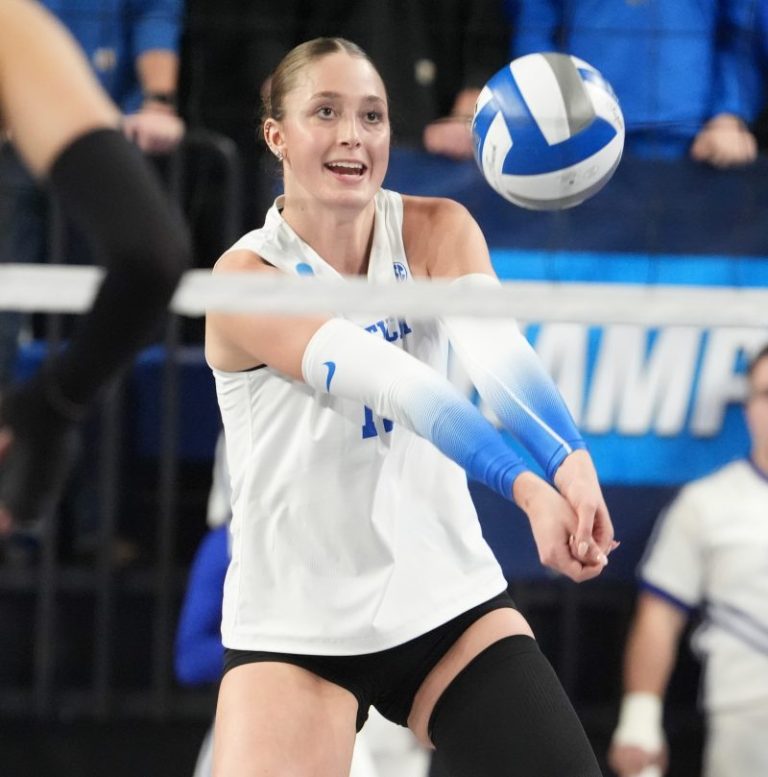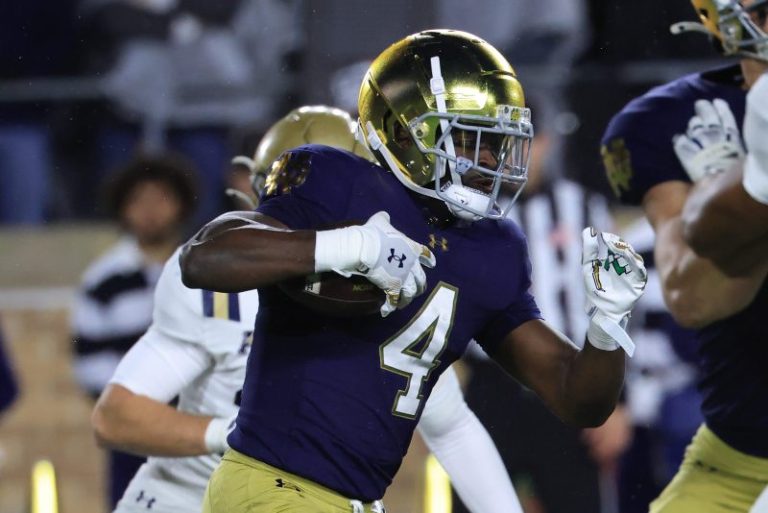This is it. The final frontier before the NCAA women’s volleyball Final Four.
All four No. 1 and No. 3 seeds advanced through the Round of 16 and will play Saturday and Sunday for a right to advance to Final Four at the T-Mobile Center in Kansas City, Missouri.
No. 1 Kentucky beat No. 3 seed Creighton to punch its ticket in the early match Saturday. They will face the winner of No. 3 Purdue against No. 1 Pittsburgh (7:30 p.m., ESPN2).
Pitt’s had sweeps against UMBC, Michigan and Minnesota to advance. But many of the sets were too close for comfort.
“I think we’re really battle-tested,” said Pitt’s Olivia Babcock, the reigning Player of the Year. “In no way does it feel like we’ve swept our way through. All these teams are playing their hardest, and if you look at the scores, it’s not like we’re blowing teams out. It’s like 25-23, a set that could really go either way.
“I feel like it’s testing us with how we can play at the end (of sets). That’s something that’s going to be really important moving into these next three rounds.”
FINAL SCORE: Kentucky 3, Creighton 0
Set 3 final: Kentucky 25, Creighton 18
Kentucky advances to its second Final Four. Brooklyn Deleye finished with 18 kills, Eva Hudson 13 kills and Asia Thigpen eight kills. Kassie O’Brien had 40 assists and eight digs. The Wildcats hit .263 for the match.
Set 3: Kentucky closing in on second Final Four
Brooklyn Deleye has 16 kills and is hitting .316. Eva Hudson has 12 kills and is hitting .320. Kassie O’Brien has 38 assists.
Set 2 final: Kentucky 25, Creighton 13
The Wildcats handed the Bluejays their worst set defeat of the season. Kentucky improved its hitting percentage to .289 and had 11 kills from Brooklyn Deleye. Crieghton had eight kills and eight errors for a .000 hitting percentage.
Kentucky is one set away from Kansas City and the Final Four.
Set 2: Kentucky again first team to 15
Kentucky has nine kills and is hitting .282. The Bluejays have a negative hitting percentage in the second set at -0.0.37.
Set 1 final score: Kentucky 25, Creighton 19
Brooklyn Deleye and Eva Hudson had six kills each to lead Kentucky. The Wildcats are hitting .292 as a team compared to .091 for the Bluejays. Kentucky had 17 kills in the first set and Creighton nine.
Set 1: Kentucky first to 15
Brooklyn Deleye and Eva Hudson have five kills each in the early going to help the Wildcats get to a slim 15-14 lead.
Kentucky starting volleyball lineup
Creighton starting volleyball lineup
Kentucky ready to protect its house
When is NCAA women’s volleyball regional final?
Date: Dec. 13 and Dec. 14
Time: Two matches each day. Match-by-match times below.
How to watch NCAA volleyball tournament
Streaming: ESPN+ ∣ Fubo (free trial)
The 2025 NCAA women’s volleyball tournament will air across the ESPN and ABC family of networks. Games can be streamed ESPN+, ESPN’s subscription streaming service, and Fubo, which offers a free trial to potential subscribers.
NCAA volleyball regional final: Times, TV
All times Eastern
Saturday, Dec. 13
No. 3 Creighton vs. No. 1 Kentucky, 5 p.m. | ESPN2
No. 1 Pittsburgh vs. No. 3 Purdue, 7:30 p.m. | ESPN2
Sunday, Dec. 14
No. 3 Wisconsin vs. No. 1 Texas, TBD | ESPN2
No. 3 Texas A&M vs. No. 1 Nebraska, TBD | ESPN2
When is the NCAA volleyball Final Four in 2025?
Dates: Thursday, Dec. 18 and Sunday, Dec. 21
The two semifinal matches in the Final Four of the 2025 NCAA volleyball tournament will take place on Thursday, Dec. 18 and will be broadcast on ESPN. The national championship game is Sunday, Dec. 21 on ABC.
Round of 16 volleyball results
Thursday, Dec. 11
No. 3 Creighton 3, No. 2 Arizona State 1
No. 1 Kentucky 3, Cal Poly 0
No. 1 Pittsburgh 3, No. 4 Minnesota 0
No. 3 Purdue 3, No. 2 SMU 1
Friday, Dec. 12
No. 1 Texas 3, No. 4 Indiana 0
No. 3 Wisconsin 3, No. 2 Stanford 1
No. 3 Texas A&M 3, No. 2 Louisville 2
No. 1 Nebraska 3, No. 4 Kansas 0
NCAA volleyball second-round results
Lexington bracket
No. 1 Kentucky 3, No. 8 UCLA 1 (30-28, 25-16, 28-30, 25-17)
No. 3 Creighton 3, No. 6 Northern Iowa 1 (25-18, 23-25, 25-22, 25-21)
No. 2 Arizona State 3, Utah State 1 (25-15, 25-18, 22-25, 25-15)
Cal Poly 3, No. 4 USC 2 (25-19, 25-20, 20-25, 14-25, 15-7)
Austin bracket
No. 4 Indiana 3, No. 5 Colorado 0 (25-20, 25-17, 25-23)
No. 3 Wisconsin 3, North Carolina 0 (25-14, 25-21, 27-25)
No. 1 Texas 1, No. 8 Penn State 0 (25-16, 25-9, 25-19)
No. 2 Stanford 3, Arizona 1 (25-16, 25-27, 25-17, 25-20)
Pittsburgh bracket
No. 3 Purdue 3, No. 6 Baylor 1 (25-16, 25-19, 23-25, 25-20)
No. 1 Pittsburgh 3, Michigan 0 (25-23, 25-23, 25-18)
No. 2 SMU 3, Florida 0 (25-11, 25-21, 26-24)
No. 4 Minnesota 3, No. 5 Iowa State 0 (25-22, 25-21, 25-14)
Lincoln bracket
No. 4 Kansas 3, No. 5 Miami 1 (25-17, 25-22, 22-25, 27-25)
No. 2 Louisville 3, Marquette 2 (21-25, 25-11, 23-25, 25-19, 15-12)
No. 1 Nebraska 3, Kansas State 0 (25-17, 25-21, 25-16)
No. 3 Texas A&M 3, No. 6 TCU 1 (23-25, 25-23, 25-22, 29-27)
NCAA volleyball first-round results
Lexington bracket
No. 1 Kentucky 3, Wofford 0 (25-11, 25-19, 25-12)
No. 8 UCLA 3, Georgia Tech 2 (24-26, 25-19, 25-23, 25-18, 15-10)
Cal Poly 3, No. 5 BYU 2 (25-19, 17-25, 20-25, 25-20, 15-10)
No. 4 USC 3, Princeton 0, (25-19, 25-12, 25-13)
No. 3 Creighton 3, Northern Colorado 2 (12-25, 25-23,25-23,17-25, 8-15)
No. 6 Northern Iowa 3, Utah 2 (15-25, 21-25, 26-24, 25-20, 15-10)
Utah State 3, No. 7 Tennessee 2 (25-19, 25-15, 19-25, 25-18, 15-11)
No. 2 Arizona State 3, Coppin State 0 (25-11, 25-14, 25-12)
Austin bracket
No. 1 Texas 3, Florida A&M 0 (25-11, 25- 8, 25-14)
No. 8 Penn State 3, South Florida 1 (25-23, 12-25, 25-21, 25-19)
No. 5 Colorado 3, American 0 (25-16, 25-19, 25-16)
No. 4 Indiana 3, Toledo 0 (25-18, 25-15, 25-17)
No. 3 Wisconsin 3, Eastern Illinois 0 (25-11, 25-6, 25-19)
North Carolina 3, No. 6 UTEP 1 (24-26, 25-11, 25-18, 25-21)
Arizona 3, No. 7 South Dakota State 1 (25-21, 22-25, 25-15, 25-15)
No. 2 Stanford 3, Utah Valley 1 (21-25, 25-21, 25-13, 25-14)
Pittsburgh bracket
No. 1 Pitt 3, UMBC 0 (25-10, 25-17, 25-13)
Michigan 3, No. 8 Xavier 0 (25-19, 25-15, 25-23)
No. 5 Iowa State 3, St. Thomas-Minnesota 2 (21-25, 25-13, 25-16, 21-25, 15-8)
No. 4 Minnesota 3, Fairfield 0 (25-12, 25-7, 25-13)
No. 3 Purdue 3, Wright State 0 (25-13, 25-21, 25-19)
No. 6 Baylor 3, Arkansas State 2 (23-25, 25-20, 30-28, 23-25, 15-10)
Florida 3, No. 7 Rice 0 (27-25, 25-23, 25-19)
No. 2 SMU 3, Central Arkansas 0 (25-13, 25-13, 25-13)
Lincoln bracket
No. 1 Nebraska 3, Long Island 0 (25-11, 25-15, 25-17)
Kansas State 3, San Diego 2 (21-25, 25-17, 26-28, 25-22, 15-12)
No. 5 Miami 3, Tulsa 1 (25-22, 13-25, 25-22, 25-20)
No. 4 Kansas 3, High Point 0 (25-20, 25-15, 25-18)
No. 3 Texas A&M 3, Campbell 0 (25-20, 25-10, 25-13)
No. 6 TCU 3, Stephen F. Austin 0 (25-8, 26-24, 25-20)
Marquette 3, Western Kentucky 0 (25-22, 25-21, 25-16)
No. 2 Louisville 3, Loyola (Illinois) 0 (25-17, 25-9, 25-12)
NCAA volleyball tournament champions
Penn State is the reigning NCAA volleyball champion, having defeated Louisville in four sets last year in the national title game. It was the Nittany Lions’ eighth volleyball championship since 1999.
Here’s a look at the past 10 NCAA volleyball champions:
2024: Penn State
2023: Texas
2022: Texas
2021: Wisconsin
2020: Kentucky
2019: Stanford
2018: Stanford
2017: Nebraska
2016: Stanford
2015: Nebraska
The USA TODAY app gets you to the heart of the news — fast. Download for award-winning coverage, crosswords, audio storytelling, the eNewspaper and more.
This post appeared first on USA TODAY

